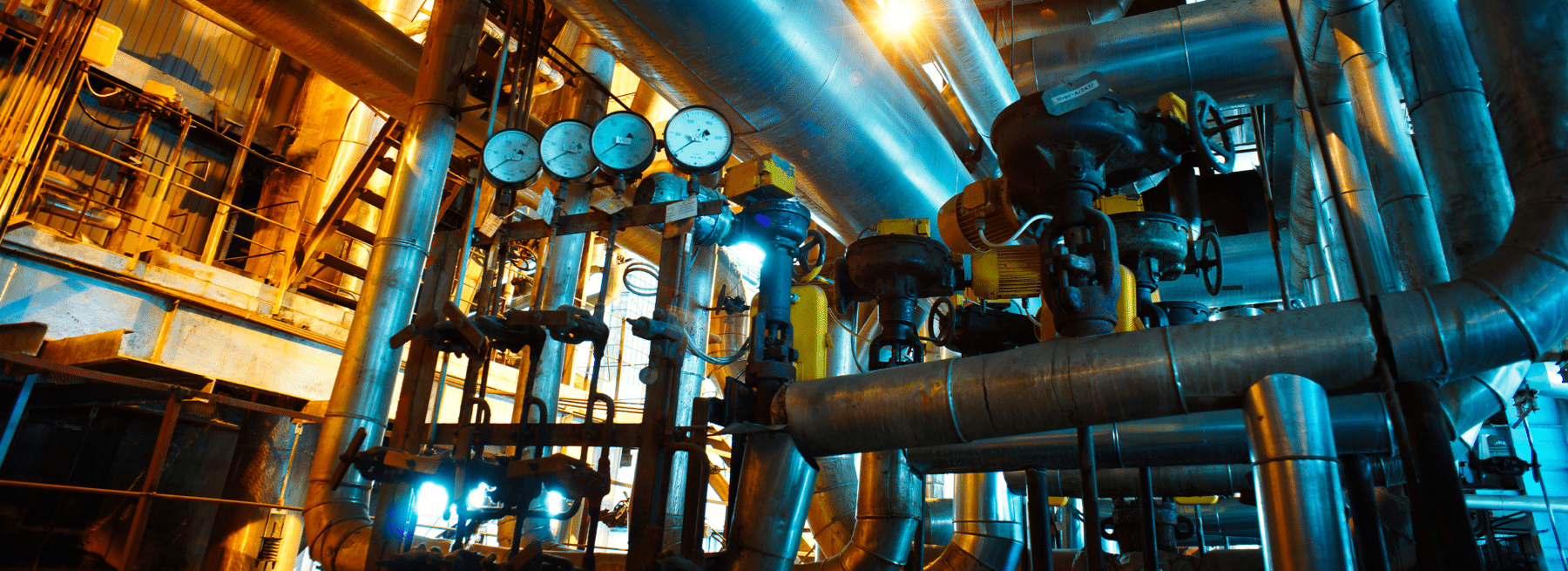With technology being so prevalent, many manufacturing companies have been focusing on cybersecurity. Unfortunately, too many cyber breaches make the news and put a company’s reputation at risk. As a result, manufacturers invest more time and resources in cybersecurity. However, they tend to neglect physical security, which is as essential as cybersecurity.
Physical security refers to measures that help protect the manufacturing facility along with its assets, property, employees, vendors, and visitors from theft, vandalism, and other events that cause damage.
The reason physical security is critical for manufacturers is because they often have large facilities, complex supply chains, and valuable equipment and inventory. If any one of these is affected, the costs can be high, not only to replace items, but there could be medical bills for any sustained injuries, not to mention work stoppages and downtime.
The Supply Chain Domino Effect on Manufacturing
The supply chain problems continue and it largely affects manufacturing facilities because of the costs involved with replacing or repairing items. Some assets are hard to replace as there is a shortage of many ingredients and parts.
Higher demand and lower supply have driven up the price and availability of items. This is why it’s vital to protect all equipment by preventing theft and damage from happening in the first place.
Don’t forget the supply chain includes the transportation and storage of raw materials and finished products. The supply chain is not just about the shortage and higher prices. It can be affected by natural disasters and other disruptions.
Flooding caused a manufacturing facility that produced baby formulas to close. They had to clean it up and test it to make sure there were no remnants of harmful bacteria. Before this happened, the facility was already dealing with a huge recall. Therefore, it had a shortage of baby formula. As it was about to start up production after the recall, the flooding happened.
Top Physical Security Concerns for Manufacturing
There are many different physical security concerns that manufacturers need to consider. Each concern requires a set of solutions. Here are some of the top physical security concerns for manufacturing facilities and the top security systems to alleviate these concerns.
1. Theft
Whether it is raw materials, finished products, or equipment that has been stolen, theft can have a significant impact on a manufacturer’s bottom line. In addition to the financial losses, crime, and damage can also disrupt production and cause delays in fulfilling orders.
Theft isn’t limited to external sources. Internal theft is also a potential problem. Employees know the manufacturing facility best, including its vulnerabilities. It’s not that the employees are criminals. They sometimes find themselves in desperate situations and look for the lowest-hanging fruit in how they could get more money.
Another type of theft is industrial espionage. The manufacturing facility could be at risk for any theft of intellectual property consisting of designs, formulas, and other trade secrets. Perpetrators could be competitors, unhappy employees, fired employees, and foreign organizations.
Combating theft involves using a variety of physical security measures. These may include access control systems and surveillance cameras with monitoring. Access control systems can control who has access to each part of the manufacturing facility. Surveillance cameras can help monitor activity and deter theft.
Preventing industrial espionage will also benefit from an access control system to limit the number of workers who can access sensitive information. They may also need to implement surveillance cameras with monitoring by humans and video analytics to detect unauthorized access.
2. Sabotage
In some cases, instead of stealing intellectual property, perps may intentionally break and damage equipment, inventory, vehicles, and other items on the manufacturer’s property. The perps may be competitors or disgruntled employees. They damage the facility in hopes of affecting business.
Like the suggestions for the other security concerns, sabotage benefits from strict access controls and surveillance cameras with monitoring to help catch potential problems before damage happens.
3. Workplace Violence
It seems like there’s always a news report about a current or past employee attacking their workplace in revenge or for other reasons. They may bring weapons with the intention to kill or commit physical assault. Or they may issue threats or harass employees.
According to the National Security Council, assault is the fifth leading cause of workplace deaths. Assault includes hitting, kicking, beating, stabbing, cutting, shooting, and shoving. NSC data shows more than 20,000 incidents of assault in 2020 that caused workers to miss a median of five days of work, which affects productivity. In 2021, there were 481 fatal deaths from assault. That’s more than one person per day.
Preventing workplace violence requires implementing strict access controls and controlling the number of people who have access to the different parts of the facility. They may also need to install video surveillance cameras to detect any unusual activity as soon as it happens.
Having a plan on how to respond to any incidents of workplace violence is also crucial. This should include information about contacting law enforcement and providing support to affected employees. (Refer to the section on the “Lack of security training.”)
4. Cybersecurity and Physical Security Attacks
Cybersecurity is already a big worry for many companies. It also affects physical security because it’s connected with cybersecurity. Hackers target technologies used to secure the facility, such as locks, alarms, smart doors, and Internet of Things (IoT) devices. In some cases, hackers will physically enter the building to access a computer or other digital asset.
Crooks look for any kind of vulnerability in security, whether it’s digital or physical. That’s why it’s valuable to have employees responsible for these separate security functions to work together. This process is known as the convergence of cyber and physical security. Understanding this helps improve a manufacturer’s security posture.
5. Lack of Security Training
A manufacturing facility may have a healthy security budget and the latest security technologies. But all of this is for naught if employees create a security hole. This can be as simple as opening the door for a stranger. That person could end up being a crook. Security cameras with remote monitoring can help close the gap as the monitoring operator can catch the incident and report it.
All employees need to receive security training at least once a year. They need to know what their responsibilities are where security is concerned. They also need to know how to react anytime an event occurs. Annual and refresher training helps prevent complacency.
Video surveillance is a proactive security solution that can do much more than close security holes. A reactive security solution does not do anything until after something happens. For example, a security alarm system that has been triggered by a break-in.
By the time the police arrive on the scene, the suspects are likely long gone. Video surveillance can help spot someone approaching the manufacturing company property before they do any damage.
It’s highly recommended to do a risk assessment before you search for security solutions. This takes an inventory of what security solutions the manufacturing facility has in place and where it may be vulnerable. The assessment involves reviewing local crime reports to see what kind of crimes hit near the manufacturer’s property.
Another important factor to add to the risk assessment is the area’s weather history and patterns. These add risks just like the flooding that affected the facility making baby formula. Nature-made disasters can be tornadoes, hurricanes, earthquakes, fires, and severe snowstorms.
The risk assessment provides you with a valuable starting point in creating a security plan and implementing security solutions. Experts advise working with a trained security specialist on risk assessment.
Physical Security Prevention for Manufacturing Facilities
Not just any security camera provides multiple layers of security that close many security gaps. You want to investigate one that relies on a combination of video analytics and human monitoring operators.
The simplest way to explain it is the system watches for a match to any one of its many programmed scenarios. When it identifies a match, it alerts a trained security operator. The operator can check out the action. If there are trespassers, the monitoring operator can issue a audio warning through an on-site speaker.
This is a completely remote system as the operators are not located on the manufacturer’s property. Since they’re in a safe location, they’re able to react calmly while responding appropriately to the situation.
If the audio warning doesn’t scare them off, then the operator can contact law enforcement. While the police make their way to the facility, the operator can track the suspects’ movements and keep the police informed. The police often arrive and capture the suspects before damage occurs.
Because the security system records everything, it may help your facility get insurance premiums lowered. Video surveillance shows insurance companies that you’ve taken steps to lower your risk. Plus, those recordings come in handy with liability claims and criminal cases as evidence.
A manufacturing company is responsible for ensuring everyone’s safety. An effective physical security program with remote video surveillance and an access control system comes with many layers of security to protect your assets, workers, vendors, and visitors. Stealth Monitoring clients have seen a quick ROI within months. It’s also possible to improve the bottom line.
How can security help your bottom line? Here’s a quote from Frost and Sullivan’s Security Solutions for the Manufacturing and Warehousing Industry.
“While it is difficult to calculate a tangible ROI on security, it is essential to use technology to solve some of the business issues impacting the manufacturing industry, namely use of heavy equipment, inventory control, improving employee productivity, and shift work. Increasing availability of customized solutions to address each of these business issues has helped manufacturing companies use technology to improve their bottom line.”
Check out the videos of Stealth Monitoring in action to learn how video surveillance with monitoring deters crime and averts damage. Want to learn more about physical security for manufacturing? Contact us. Texas Private Security License Number: B14187.

